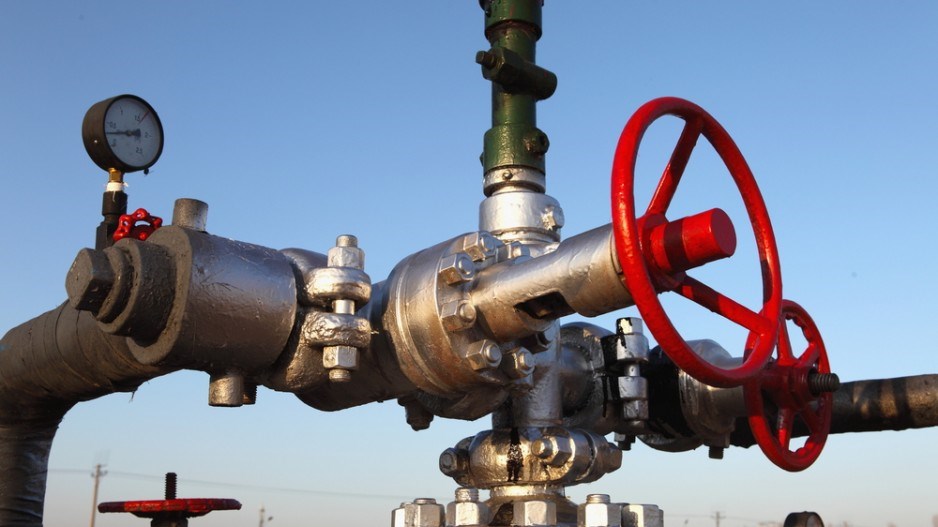New natural gas opportunities in northeastern British Columbia, as well as in northwestern Alberta, are changing the dynamics of infrastructure systems in those regions in response to growing LNG demand, says a new study on the area.
“The developing North Montney and shale gas resources present a unique opportunity to integrate and utilize the area infrastructure for the benefit of both current and developing resources,” according to the resource and infrastructure study by consultants Gas Processing Management Inc. and Ziff Energy, a division of HSB Solomon Associates LLC.
“Growing shale and tight gas production, when coupled with the declining existing resource base, will require constructing new infrastructure and utilizing, retooling and expanding existing facilities.”
The North Montney and Shale Gas Growth Study is the northward continuation of the previously released South Montney and tight gas study. It analyzes the area west of Fort St. John to the Yukon and Northwest Territories, including the North Montney tight and Horn River plays, Liard and the Cordova shale basin.
The study forecasts the production by sub-region until 2024 in terms of natural gas, ethane, NGL and condensate, said Bill Gwozd, senior vice-president of gas services for Ziff, in an interview. It also lays out a blue print for co-operatively using the existing gas gathering and processing infrastructure, and identifies new area infrastructure to effectively and efficiently process growing gas production.
"In some cases, it's not adequate; in other cases it's way too big," Gwozd said. For example, while some of the new production is expected to contain significant volumes of natural gas liquids, the area contains limited takeaway capacity for liquids, the report found.
It provides information for western LNG development and the impact that will have on the 34 sweet and sour gas plants and gathering systems in the area.
In cases where the infrastructure is inadequate, the consultants can forecast how much plant capacity is required, in what year and what type -- sour gas processing, NGL (C3 plus) or deep cut. The study also indicates where long-reach lateral pipelines will be required to transport the supply back to the plant.
The report found the study infrastructure has an existing processing capacity of 5.1 billion cubic feet (bcf) per day with planned expansions to 5.7 bcf per day. However, only 2.2 bcf per day of gas per day currently is processed in the area, which translates into upwards of three bcf per day of surplus unused capacity, it noted.
"We believe that a structured approach to developing a common gas gathering and processing strategy in gas growth regions, along with a repositioning analysis in maturing regions, will improve utilization and effectiveness of the infrastructure, extend overall gas field production and ultimately result in the development and recovery of more resources," says the report.
Where existing infrastructure presents an economically viable alternative to gathering and processing the developing gas or new infrastructure is required, the study emphasizes a co-ordinated industry approach to reduce capital employed and operating expenses. For example, in Alberta’s Kaybob area (northern Duvernay), there are existing underutilized long reach gathering pipelines that could transport gas to underutilized sour gas plants, said Gwozd.
In cases where existing facilities are not expected to play a role in the growing resource volumes, the study emphasizes a co-ordinated industry approach to reduce both capital employed and operating expenses.
But how will that come about? Gwozd said he believes that the Alberta government “needs to step up quicker” to encourage greater consolidation rather than continuing to study the issue because the consultants have already provided a blueprint. The consultants, he said, have discussed the issue with Ken Hughes, the former energy minister, and with the Alberta Energy Regulator, which has raised the issue of more co-operation among companies in the new shale plays when it comes to infrastructure development.
The reductions in the Gas Cost Allowances from the proposals in the report would save the Alberta and B.C. government "tens of millions of dollars," said Gwozd. For example, if two gas plants were consolidated the overall cost of capital would drop as would the gas cost allowance.
The province could also receive increased royalties if it were to accept some of the report's recommendations, he said. At present, a gas plant operator whose load factor drops to 35% may achieve a “minimum turndown rate” and “you have to walk away from your assets in the ground,” he said. However, if the plant were to be kept full with gas transported via a long reach gathering pipeline, “you could salvage the resource, produce it longer and produce more royalties for the people of Alberta.”
Ultimately, though, “the challenges related to developing or repositioning an area for a step change in performance are much more than technical; any analysis must address business factors that will ultimately determine if solutions can be implemented,” the report cautions.
The North Montney and Shale Gas Growth Study is the fourth in a series of seven resource and infrastructure analyses that address developing Western Canada unconventional tight (Cretaceous, Duvernay and Montney) and shale gas growth. Two more studies will be released in 2014: Gas West in June and NGL East in December 2014, said Gwozd.
The Gas West study, which is currently underway, takes the gas supply from the four regions (Montney, North Montney/shale gas, tight gas/Northern Duvernay and tight gas/Southern Duvernay) and assigns it to the four pipelines that would be required to move gas to the West Coast for LNG exports. That study also will include a module assessing the heating requirements of the gas in Asia.
“If they need the heating value, that would mean that additional liquids would be needed for that purpose.”
The NGL East study will assess the liquid transportation systems for fractionation products and outline what would be required to move all the liquids to Edmonton.




